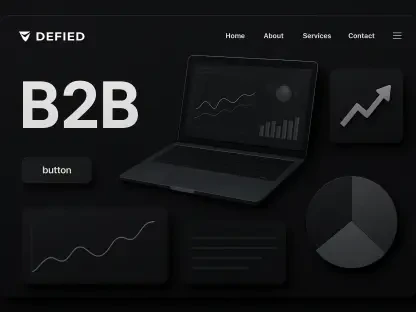Unveiling the Power of People Also Ask in SEO
Imagine a search engine results page where a single feature can catapult a website’s visibility, even if it struggles to break into the top rankings. People Also Ask (PAA) boxes have emerged as a game-changer in this landscape, offering a prime spot on SERPs for those who know how to leverage them. These expandable question boxes not only capture user attention but also provide a direct path to answering related queries, making them a golden opportunity for brands seeking to stand out.
The significance of PAA lies in its ability to democratize visibility. Websites that may not secure a top organic spot can still appear prominently through these boxes, gaining clicks and credibility. This dynamic feature reshapes how content is discovered, and understanding its potential is vital for any SEO strategy aiming to dominate search results.
What makes this even more compelling is the actionable nature of ranking in PAA. By targeting specific user questions and optimizing content effectively, businesses can achieve measurable gains in exposure. This guide dives into proven strategies to secure a spot in these boxes and track performance over time, ensuring sustained success in an ever-evolving digital space.
Why People Also Ask Matters in Today’s SERPs
The People Also Ask box is an accordion-style feature on Google’s search results page that displays a list of questions related to a user’s query. When expanded, each question reveals a concise answer with a link to the source website, offering users quick insights without needing to scroll through multiple results. This format enhances user experience by addressing follow-up curiosities directly on the SERP.
Beyond convenience, PAA integrates with modern search advancements like AI Overviews, sometimes embedding AI-generated snippets within expanded answers. This synergy reflects Google’s focus on conversational search, making PAA a critical touchpoint for brands aiming to align with evolving user behavior. Statistics reveal that Google itself generates nearly 13% of PAA answers, underscoring the feature’s prominence and the competitive edge it offers to websites that optimize for it.
Strategically, PAA holds immense value for capturing related queries and reinforcing top rankings. For businesses already ranking well, appearing in PAA can further dominate a SERP, while for others, it provides a foothold to reach audiences despite lower organic positions. As search intent becomes more nuanced, securing a presence in these boxes is no longer optional but a cornerstone of a robust SEO approach.
Step-by-Step Guide to Optimize for People Also Ask
Step 1: Researching PAA Opportunities with Tools
To begin optimizing for PAA, thorough research using SEO tools is essential. Platforms like Semrush offer features such as SERP Features within Domain Overview, which allow analysis of a domain’s current visibility in PAA boxes. This tool provides multiple perspectives, including where a domain already ranks in PAA, where PAA appears for associated keywords, and areas where competitors hold spots that the domain misses.
Leveraging Organic Research for Insights
Diving into Organic Research within such tools helps uncover keywords for which a site ranks but fails to appear in PAA results. This data pinpoints content gaps that can be transformed into optimization opportunities. By identifying these missed spots, a clear list of target areas emerges, guiding efforts to enhance existing pages or create new content tailored to those queries.
Spotting Competitor PAA Wins
Equally important is analyzing competitors’ PAA rankings to reveal where they succeed and a domain falls short. This competitive insight highlights content deficiencies and sparks ideas for new pages or updates that can challenge rival positions. Examining multiple competitors ensures a comprehensive understanding of the landscape, enabling a strategic approach to close visibility gaps.
Step 2: Identifying and Targeting Relevant PAA Questions
Once research tools highlight potential opportunities, the next focus is on pinpointing PAA questions in SERPs that align with a brand’s niche. For instance, a company like Nike might rank well for “Jordan 4” but miss PAA spots for related queries like “How do I spot fake Air Jordans?” Identifying such questions directly from SERP analysis reveals actionable content ideas.
Prioritizing Questions Your Site Can Win
Not all PAA questions are worth pursuing; the emphasis should be on those relevant to a brand’s expertise and audience. Selecting queries where a site holds authority or has the potential to rank ensures efforts are directed toward achievable wins. This targeted approach maximizes the likelihood of securing a PAA spot without wasting resources on irrelevant topics.
Creating a Content Plan for PAA Queries
With prioritized questions in hand, the next task is mapping out a content plan to address them effectively. This could involve updating existing pages with new sections or developing entirely new pages dedicated to specific queries. A structured plan ensures that content creation aligns with SEO goals, systematically tackling each opportunity to boost visibility.
Step 3: Crafting PAA-Friendly Content
Creating content for PAA requires a focus on clarity and structure. Answers should be concise and directly address the question, formatted with ## or ### tags for the query itself, followed by a brief paragraph or bullet points. This layout mirrors the format Google often pulls for PAA boxes, increasing the chances of being featured.
Ensuring Clarity and Relevance in Answers
The quality of responses is paramount; answers must be accurate and written in natural language, avoiding unnecessary fluff. Directly addressing the user’s intent without veering off-topic ensures the content resonates with both search engines and readers. Precision in language keeps the information digestible and effective for quick consumption on SERPs.
Building Authority with Credible Support
Supporting answers with credible sources, when relevant, adds weight to the content and builds trust. Additionally, incorporating internal links to related pages signals their importance to search engines while guiding users deeper into the site. This dual approach not only aids PAA ranking but also enhances overall site credibility and user engagement.
Step 4: Boosting Site Authority for PAA Success
Ranking in PAA isn’t solely about content; site authority plays a significant role. Earning backlinks from high-authority domains through methods like news coverage or thought leader interviews can elevate a site’s standing in Google’s eyes. Such external validation is crucial for establishing trust and improving ranking potential.
Strengthening Internal Linking Structures
A robust internal linking profile further supports PAA-targeted pages by directing link equity toward them. Thoughtful links from high-traffic or relevant pages on the site signal priority to search engines, enhancing the likelihood of PAA inclusion. This internal strategy complements content efforts, creating a cohesive optimization framework.
Securing External Links for New Pages
For newly created PAA content, gaining external links is equally vital to accelerate ranking potential. Outreach campaigns or content promotion to authoritative sites can secure valuable backlinks, providing a boost in credibility. This external reinforcement helps new pages compete more quickly in the crowded PAA space.
Step 5: Avoiding Common PAA Optimization Pitfalls
Optimization for PAA comes with pitfalls that can undermine efforts if not addressed. Recognizing and avoiding these common mistakes ensures content remains eligible for PAA boxes and delivers value to users. A mindful approach prevents penalties and maintains alignment with search engine guidelines.
Steering Clear of Keyword Stuffing
One frequent error is keyword stuffing, which disrupts the natural flow of content and risks appearing spammy. Answers should prioritize user needs over forced keyword inclusion, maintaining authenticity in tone and intent. This user-first mindset aligns with Google’s emphasis on quality over manipulation.
Aligning with Search Intent
Another misstep is shoehorning unrelated answers into pages, ignoring the core search intent behind a query. Content must genuinely address the question asked, ensuring relevance to the user’s needs. Misalignment can lead to poor performance and diminished trust from both users and search engines.
Keeping Answers Concise and Updated
Long-winded responses are ill-suited for PAA, where brevity is key to user engagement. Additionally, failing to refresh content risks outdated information losing relevance over time. Regular updates to answers ensure they remain accurate and competitive in an ever-changing search environment.
Step 6: Tracking Your PAA Performance Over Time
Monitoring progress is critical to understanding the impact of PAA optimization efforts. Using tools like Semrush, tracking can focus on target keywords to identify when a site secures PAA spots. This data provides a clear picture of success and areas needing further attention.
Setting Up Rank Tracking for PAA Keywords
Incorporating PAA-specific keywords into rank tracking tools allows for precise measurement of visibility gains. Regular checks reveal when a site captures a spot and for which queries, offering actionable feedback. This systematic tracking forms the backbone of an adaptive SEO strategy.
Analyzing Trends for Strategic Adjustments
Beyond static rankings, analyzing trends in SERP Features over time uncovers patterns in performance. Filtering for PAA results in tracking tools highlights growth or declines, guiding strategic refinements. Such insights enable continuous improvement, ensuring optimization efforts remain effective amidst shifting algorithms.
Key Takeaways for PAA Optimization Success
- Research PAA opportunities using SEO tools to identify gaps and competitor wins.
- Target relevant questions a brand can authentically answer.
- Create concise, formatted content with proper headings and natural language.
- Build site authority through internal and external linking.
- Avoid pitfalls like keyword stuffing and ignoring search intent.
- Track performance with rank tracking tools to measure and adapt strategy.
The Broader Impact of PAA in SEO Evolution
The rise of PAA reflects broader shifts in SEO, particularly with the integration of AI and conversational search patterns. As users increasingly rely on voice search and natural language queries, PAA boxes serve as a bridge to meeting these nuanced demands. Optimizing for this feature positions brands to adapt seamlessly to emerging search technologies.
This optimization also drives long-tail traffic by capturing specific, intent-driven queries that might otherwise be overlooked. Establishing a presence in PAA not only boosts visibility but also cements authority in a niche, as users associate featured answers with expertise. This dual benefit amplifies a site’s reach beyond traditional keyword rankings.
However, the growing competition for PAA spots presents challenges, as more brands recognize their value. Staying agile amid evolving SERP layouts and algorithm updates is essential to maintain an edge. Embracing PAA as part of a forward-thinking SEO strategy ensures resilience against future shifts in the digital landscape.
Final Thoughts: Make PAA Your SEO Edge
Reflecting on the journey through PAA optimization, it becomes clear that this feature offers a powerful gateway to enhanced visibility and authority. Each step, from meticulous research to strategic tracking, contributes to building a stronger presence in search results. The process demands attention to detail and a commitment to user-focused content.
Looking ahead, the next steps involve integrating PAA tactics into broader SEO frameworks for sustained impact. Exploring additional tools and staying updated on search trends helps refine approaches over time. This proactive stance ensures that efforts adapt to new challenges and opportunities in the dynamic world of search.
Ultimately, the focus shifts toward continuous experimentation with content formats and linking strategies to maximize PAA success. Delving deeper into user intent and leveraging data-driven insights paves the way for long-term growth. This ongoing dedication transforms initial wins into a lasting competitive advantage in SERPs.









